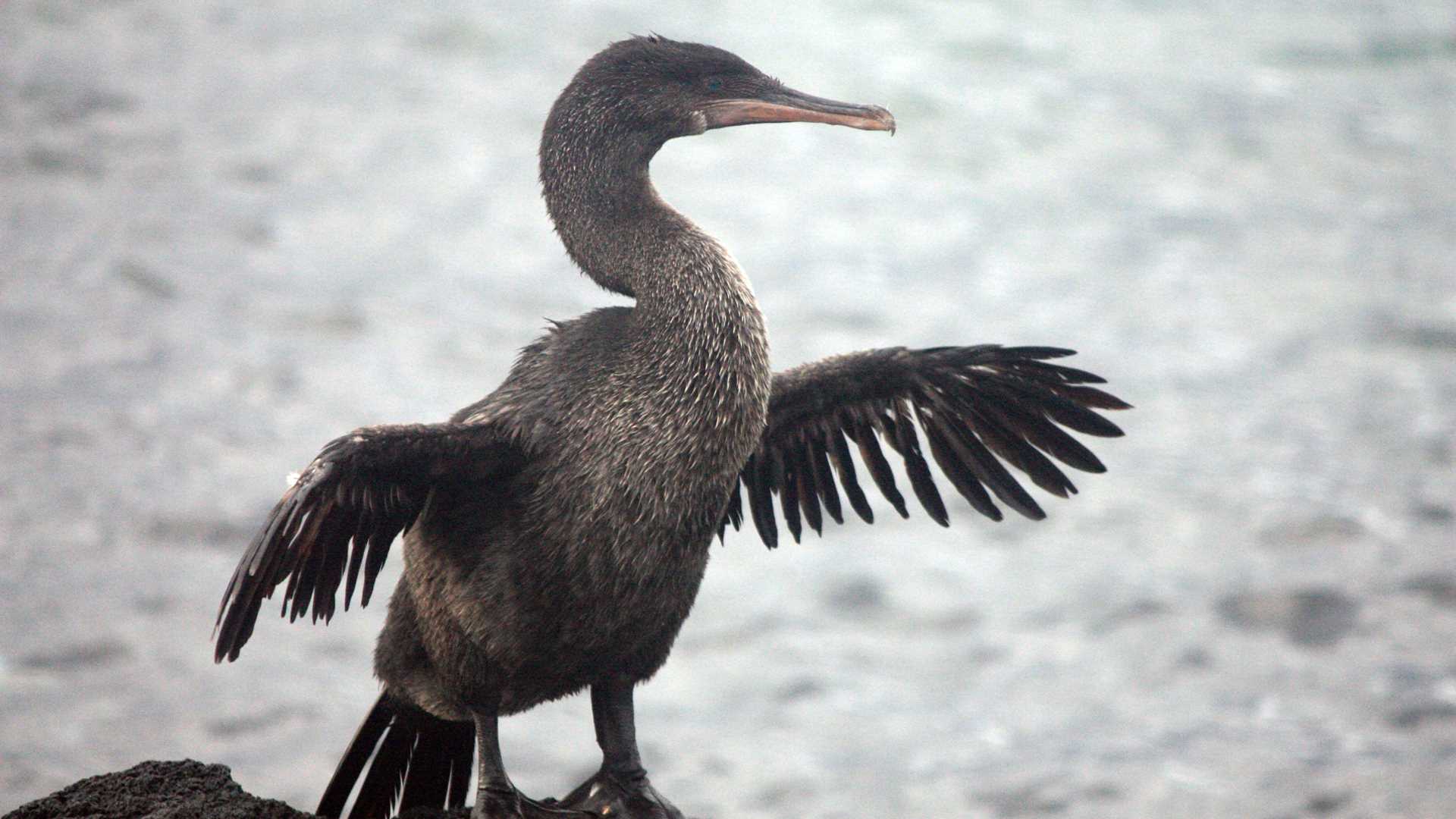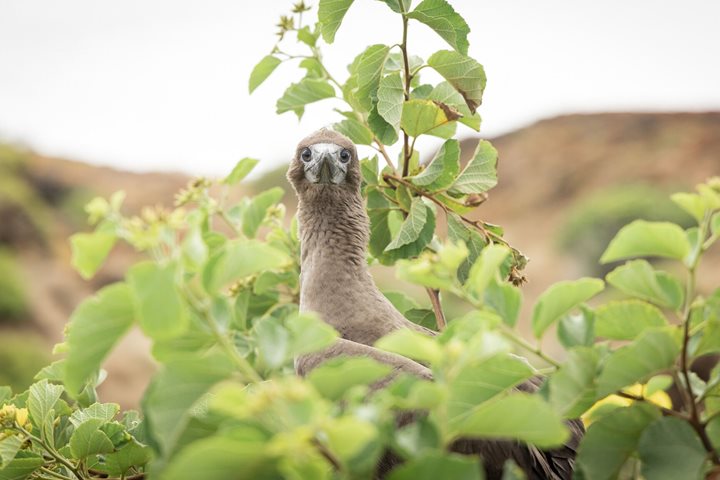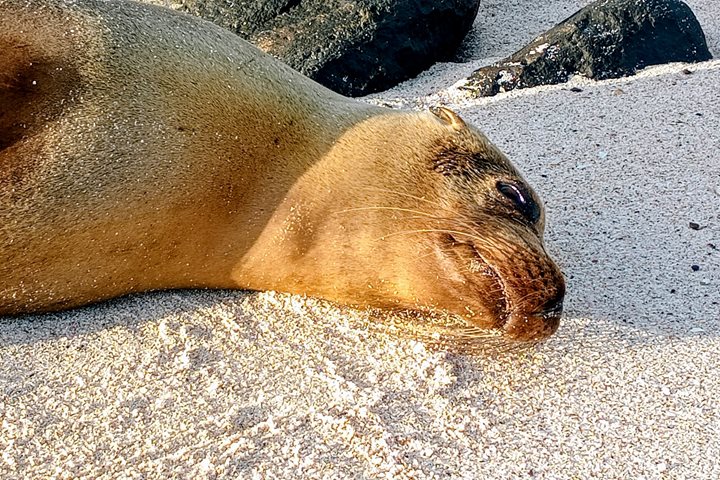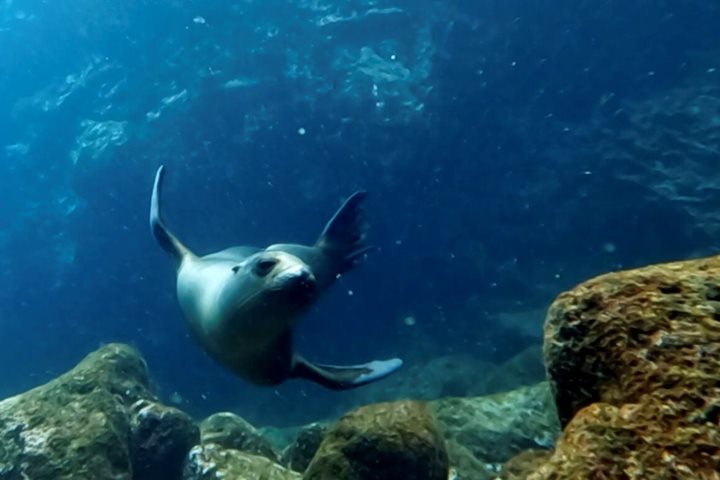Isabela Island is the largest in the archipelago, occupying 50 percent of the total area. The island is home to many endemic and native species. These species, complemented by incredible natural landscapes, make Isabela one of the most beautiful islands in the Galapagos.
After breakfast, we boarded Zodiacs heading towards Urbina Bay. The sun was radiant, the sea was calm, and a gentle sea breeze refreshed us. Urbina Bay is unique. In 1954, two square kilometers of ocean floor were raised until they reached the ocean surface. This geological process completely changed the topography of this part of the island, bringing to the surface countless huge coral heads and rocks with many barnacles. The exoskeletons were petrified forever, and they are seen nowadays along the trail that runs through this entire area.
We disembarked on the black beach, which looked full of sea turtle tracks. During the previous night, the turtles nested everywhere. On the rocks, marine iguanas warmed their bodies with the first rays of sun. Inland, the vegetation looked completely green due to intense rains over the last few days. After a few minutes, giant Galapagos tortoises appeared in front of us. We observed more than twenty; some walked slowly along the path, and others rested in the shade, undeterred by our presence. Very close to the tortoises, land iguanas left their burrows to start warming up after a night of rain that completely drenched this place. After the walk, we returned to the landing beach where our guests enjoyed a refreshing swim while observing sea turtles and cormorants in the distance.
In the afternoon, National Geographic Islander weighed anchor to sail north towards Tagus Cove, one of the most historic sites in the archipelago. During the 17th and 18th centuries, pirates and buccaneers hid their ships here after pilfering the treasures of the Spanish galleons.
In the afternoon, several activities were available for our guests: some preferred kayaking, while others chose snorkeling. I oversaw a group of snorkelers. Aboard the Zodiacs, we headed out of the bay to discover a unique underwater world. As soon as we started swimming, we found sea turtles everywhere, feeding on green algae or just swimming close to us. Then, a group of sea lions approached us and started to swim with us. We saw many species of fish, such as grunts, hogfish, mullets, and salemas. The best of all was probably seeing a flock of about fifteen penguins swimming together at full speed, catching fish in a feeding frenzy. They passed very close to us, unperturbed by our presence, and then, little by little, they moved away and disappeared into the distance.
After snorkeling, we returned onboard to prepare for a Zodiac ride around the island. The sea was calm, perfect for photography. Along the coast, we saw quite a few pelicans nesting on palo santo trees. We counted at least twelve nests, all of them with chicks that still looked fluffy and white. The volcanic landscape looked majestic. Immense, collapsed rocks rose from the sea, and blue-footed boobies, cormorants, and sea lions delighted our guests. When we were getting back onboard, we found another flock of penguins swimming very close to us. We counted about eighteen of them. After a few minutes, they disappeared under the calm waters of Isabela. Just after sunset, we returned aboard National Geographic Islander, very happy and excited to have been a part of this simply fantastic and unforgettable day.







